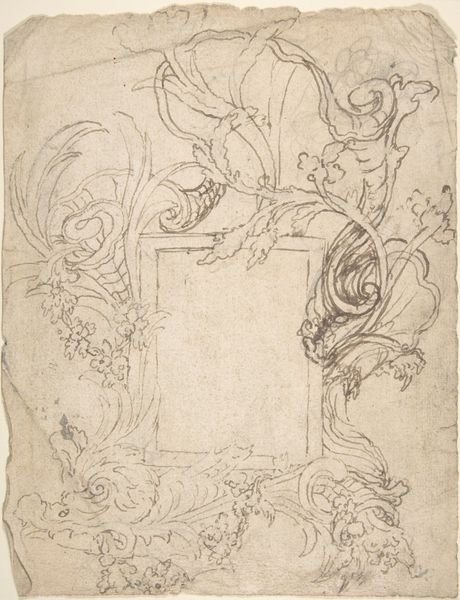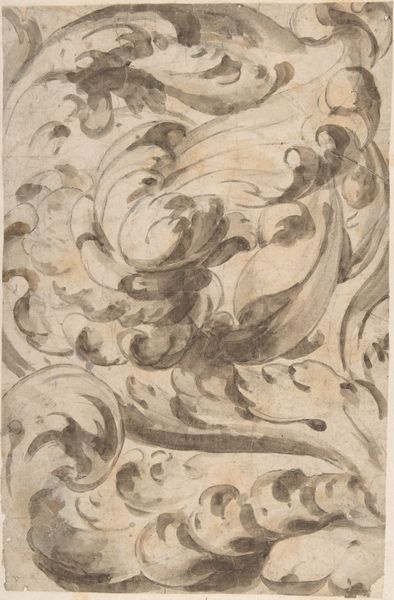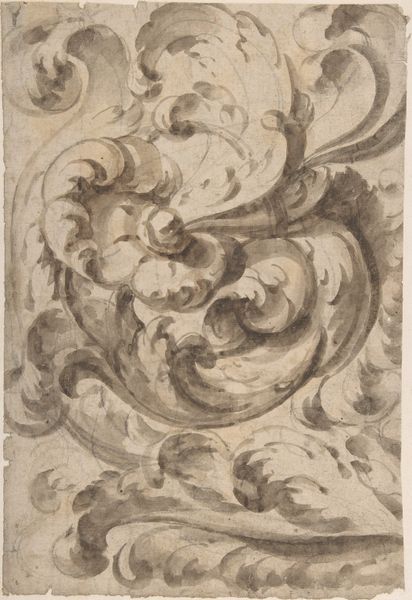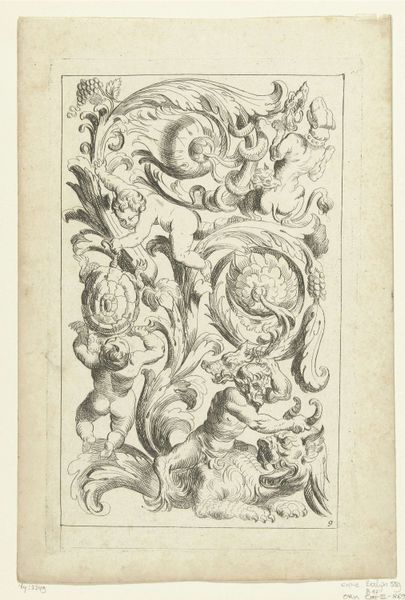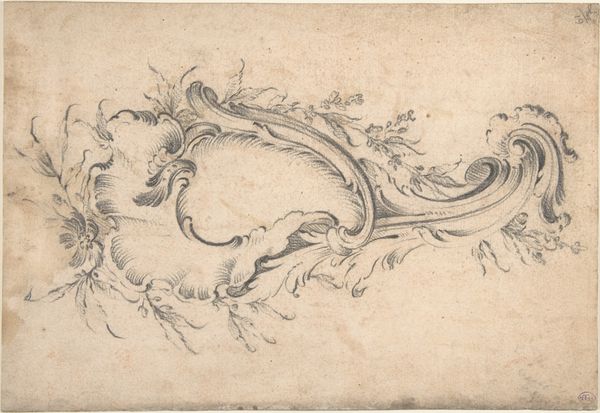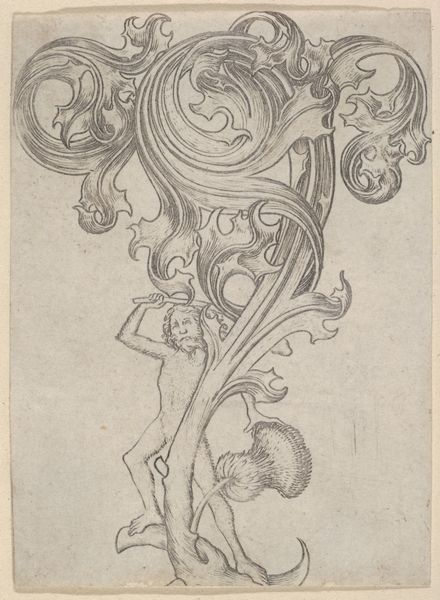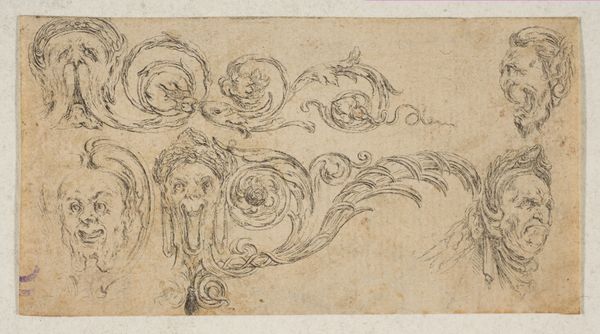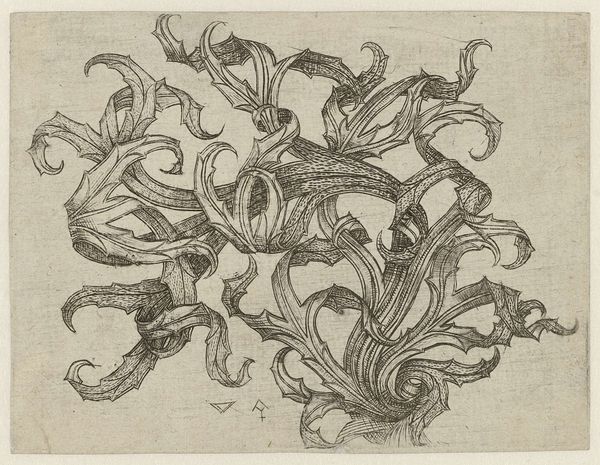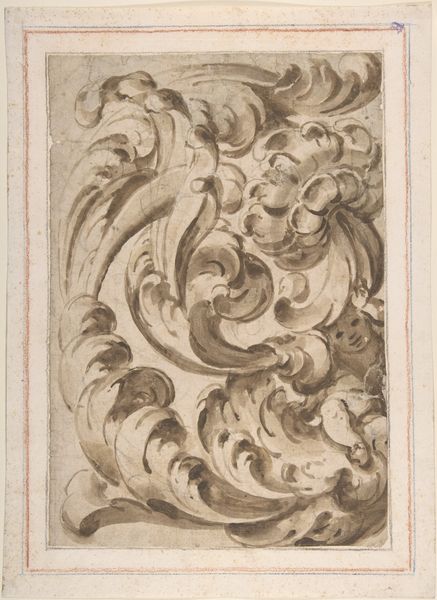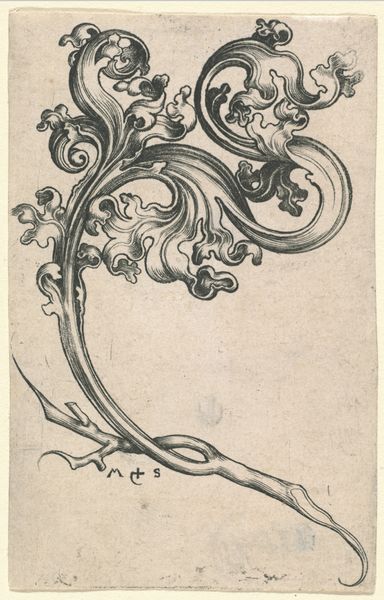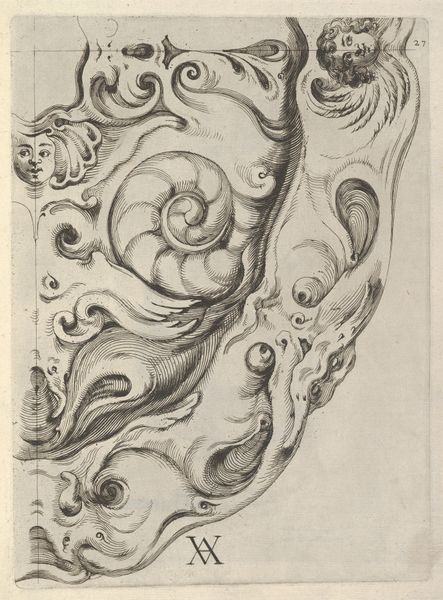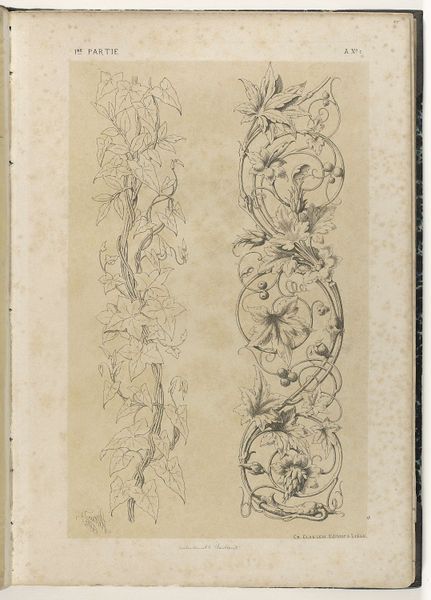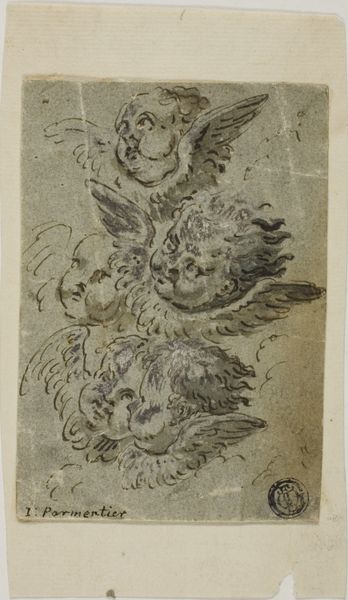
drawing, print, pencil
#
drawing
# print
#
classical-realism
#
geometric
#
pencil
Dimensions: sheet: 13 3/16 x 9 7/16 in. (33.5 x 24 cm)
Copyright: Public Domain
Curator: Here we have an 18th-century drawing titled "Ornament design" by an anonymous artist, housed here at the Met. It's rendered in pencil, almost like a preliminary study for something grander. Editor: My initial reaction is of restrained power, a sort of contained baroque energy in monochrome. It feels almost like frozen movement. I wonder, what was the function of this kind of ornament and who did it serve? Curator: Precisely! Ornament during this period wasn't merely decorative; it was deeply entwined with social structures. The design suggests its likely destined application on architecture, furniture or even textiles consumed by the elite. Think of the workshops, the guilds—all those hands involved in production! Editor: So, it’s embedded within complex relationships of production, power and class. And consider the formal qualities: the geometric repetition speaks to larger trends in 18th-century Europe as aristocratic patrons used art to naturalize unequal social and economic arrangements through notions of “taste.” Did women or other marginalized identities factor into the use of this imagery? Curator: Intriguing question. While this drawing might appear to reinforce social hierarchies, it's worth considering that prints, being reproducible, democratized access to design ideas. Architects, artisans, even upwardly-mobile merchants could circulate them, albeit in their own fashion. Editor: A tension, then, between exclusive access and wider influence. The ubiquity of classical motifs naturalized existing gender and racial power relations. But it could also spark subversive forms of appropriation from outside those privileged social positions. Curator: Yes. This wasn't static symbolism. Consider, the production of pencils: What role did global trade networks and exploitation play in ensuring accessibility to these kinds of goods and their final artistic realization? Editor: In some ways, an artifact such as this encapsulates so many complex cultural dialogues concerning beauty, labor, class, and global economics operating in a distinct time and place. I leave having more questions than answers. Curator: Absolutely, but those questions are key to engaging more fully with art’s ever present history and impact. Thanks for opening my mind to deeper social analysis.
Comments
No comments
Be the first to comment and join the conversation on the ultimate creative platform.
